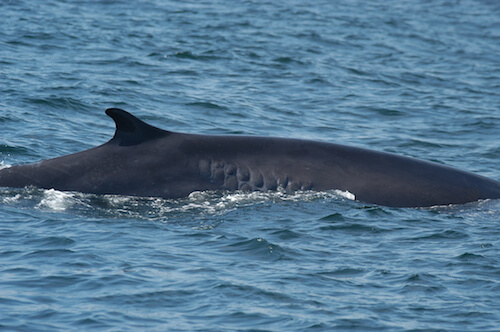As migratory species, whales take advantage of the rich St. Lawrence waters in the summer to feed. Every summer, they enter the Estuary and Gulf of St. Lawrence and swim upriver to the Saguenay–St. Lawrence Marine Park. Longtime observers wait patiently to see returning animals, which have become unique with their particular markings, one-of-a-kind behaviours and colour patterns that give away their identities in one way or another.
This week, the first whale-watching trips took place in the Tadoussac region and naturalists and captains were more than happy to see two regulars of the Marine Park: fin whales Zipper and Newkie Brown. In late October of last year, as the season was drawing to a close, Zipper was seen in a group of close to ten fin whales. Newkie Brown is usually one of the first fin whales to enter the Estuary; this year is no exception. This animal made a brief appearance in June 2014, but had not been seen in 2015. It has been known since 1991 and Zipper, since 1994. It is always great news to see these “family friends” return for a new season!

On May 2, at the mouth of the Saguenay, it was the beluga Céline that raised the spirits of the GREMM team, which has been studying this species for over thirty years. This female has been known since 1987! Moreover, in the past few days belugas are said have been present almost daily in the mouth of the Fjord.
Further downstream, in the region of Franquelin, minke whales are the ones stealing the show. Reports have come in of three different individuals engaging in highly dynamic surface feeding behaviours. Then, on May 4, two harbour porpoises were seen, the first observation of this species to be reported this year. Observers are also quick to point out the presence of seabirds, “a veritable ballet”, according to one Tadoussac-based naturalist.





